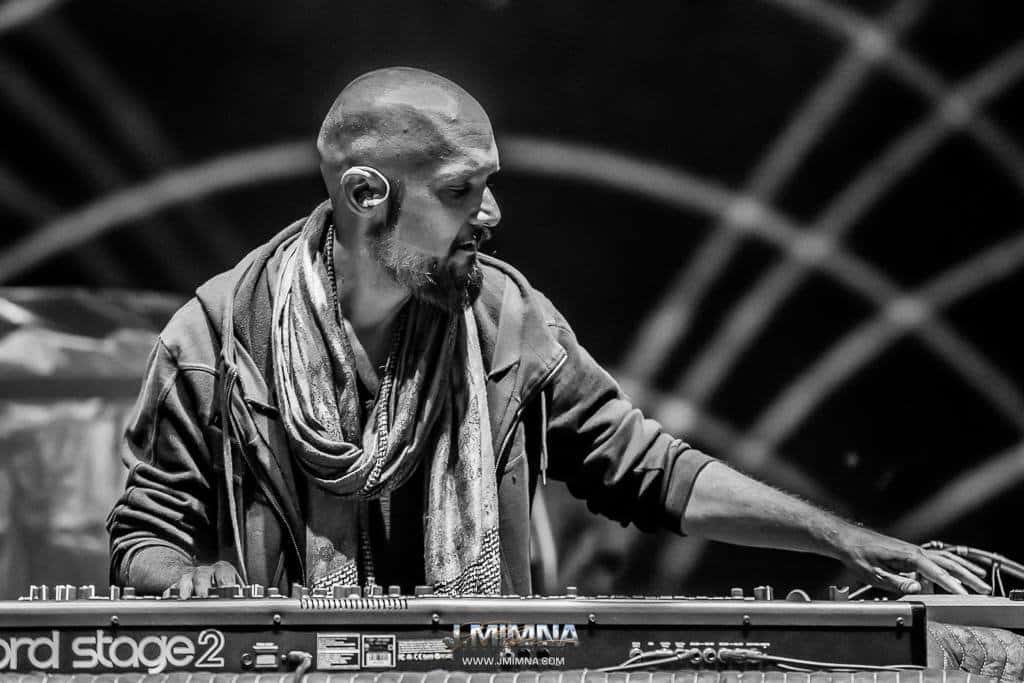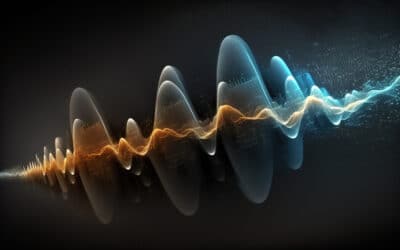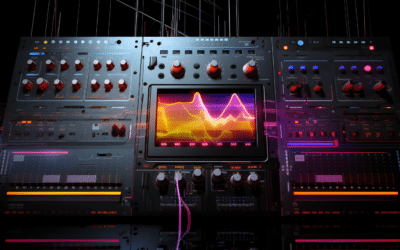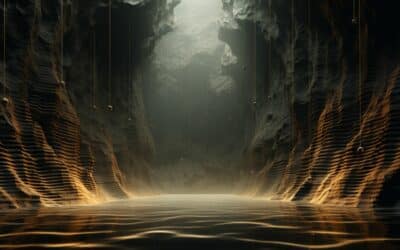Asher Fulero is a multi-faceted threat. To call him merely a keyboard virtuoso feels like an insult to his skills as a producer, creator, and all-around artist. Endorsed by both Nord and Moog, he pushes the limits of the digital atmosphere while approaching it with an analog state of mind.
Reading his resume can feel akin to playing shuffle on a sonic kaleidoscope: collaborations with downtempo legend Emancipator, guitar legend Paul Gilbert, bluegrass heroes Yonder Mountain String Band, festival mainstays Everyone Orchestra, The Asher Fulero Band, his own EDM work as Halo Refuser, and on and on… We talked with Asher about using the right gear for the right moment, and how much the medium matters when it comes time for creation.
Adam King: Since one of the latest things people may have seen you with is playing with Emancipator, can you describe what gear you’re using on stage with him?
Asher Fulero: When the Emancipator Ensemble performs, my role is just to cover piano and electric piano that Doug [Appling] isn’t already doing or isn’t a part of the mix. Other songs I’m adding to what’s already in the mix, and sometimes there are synthesizer things that I do.
For the most part, I keep it simple. I have a Nord stage that’s running through a KP3 Chaos Pad, which is getting Midi-Clock synch from Doug’s computer. So, I can do remix-y style effects with the X-Y Pad that are all tempo-synched with whatever’s going on with the song. If the song is at 120, then my delay is at 120 and my filter sweeps are at 120. If he changes the tempo mid song, my chaos pad tempo just moves with it. I don’t have to worry about tapping anything in or anything ever being out of time. It’s kind of magic when you start doing it.
AK: So, I’m assuming you’re the kind of person who’s not afraid to have their gear in a constant state of evolution.
AF: Halo Refuser was the culmination of several projects’ worth of slow gear growth. From first having a trio, then losing a bass player, and saying, “We don’t need a bass player. I can use my left hand.” And then the drummer can’t do it anymore. “Well, we don’t need a drummer – we got a drum machine.” And then I get a guy who does turntables and samples, so I can make all the music and he can frost it.
But then after a while, it was like, “well I don’t even need that – I’ll just do it all myself.” And that’s sort of where Halo Refuser came from, and then it was, “what gear do I need to do that?” And it’s always a function of what songs you’re doing, and how much of it is improv, and what gear you have available to you, and all those things are shifting as time goes by. You make more money, invest in new toys… But I kind of floated away from the big EDM concert scene because I think there’s something more sensitive about what I’m trying to reach that I wasn’t necessarily finding in that web.
AK: I would also think that in a festival setting, it could be frustrating that people don’t realize how much work you’re doing compared to the one-button pushers.
AF: When Halo Refuser first started, it was a more experimental project, and the music was really weird. Then as I started to get more name recognition, I started having higher profile appearances and I felt more driven to have music that was not necessarily mainstream, but closer to that.
But I reached a place where I realized I didn’t really need nearly as much interactivity, so I stopped bringing a synthesizer or a keyboard. I’d just bring a laptop and an interface and one or two little controllers, maybe a chaos pad, and a microphone so I could make crazy on-the-fly noises and shit.
That worked well for a while, but then I realized again that I was playing these big crowds, but no one here realizes I can actually play the piano. So, people keep telling me: “you know, you should figure out how to work the keyboard into the set.” And I’m like, “I’ve spent so much time working the keyboard out of the set!” So, then I tried to work the keyboard back into the set, but then I realized that no one can fucking tell!
So is it just for me? Why am I doing this? I really had to analyze my motivation behind doing it. I’m now making more of that jazz-hop/chill-hop stuff that we do with Dab Records, with Doug, and with Farnell [Newton], where I’m just a little more focused on things that only I can do.
AK: So, when you’re doing soundtrack work in your home studio now, how much of a manipulation of the sound are you doing through software additions versus just using your Nord?
AF: The vast majority of it is just done with the Nords and the Moogs, and the computer is mostly used as an arrangement/mixing/editing situation. You know, everybody has different feelings about it, but I try to, as much as possible, use one tool at a time. If Ableton can do it, I can make it do it.
I mean, there are things that Ableton can’t do, like a kick-ass 1176 emulation, or a kick-ass Neve 1073 emulator, or a really kick-ass Studer tape machine emulator – those kind of things Ableton doesn’t really have so I’ll use my UAD system for that. And occasionally there’ll be a tool that’ll be so captivating that you just gotta have it. Like Autotune, or I use iZotope’s RX Suite – super useful.
AK: Since you performed so much with digital gear, when you’re playing just piano, do you find it’s all coming from the same headspace?
AF: Well, expression is expression. The tool is the tool. The expression is going to be bound by what the tools can do, but that’s not going to stop the flow of expression. I can turn it on and off with whatever I’m in front of, but something that has more fun options is going to inspire me more in that way. But once I discover what the options are, it’s not about the tool – it’s about what I’m trying to do. Sometimes you’re finding a sound, and other times you’re using a sound to say something. But I wouldn’t say that I’m necessarily in a different headspace, as it just feeds the equation differently.
AK: Imagine the Mothership is going to land at the end of Close Encounters. You’ve been chosen as the person to sit down with instrumentation and gear of your choosing to play the first sounds to welcome them to Earth. What are you playing?
AF: If the people who decided that the first music the aliens were gonna hear was gonna come from me? Then I would probably say just put out a grand piano and let me play it. Because if you do anything else, there’s gonna be way too many questions. But if you put a grand piano out, I can just go sit at it and the first thing that comes through me to channel and improv in the moment would be the most appropriate thing that you could have possibly composed or chosen, and you can’t predict what it’s gonna be because it’s so perfect and you don’t know what all the details of the moment are, but when you’re in the moment you know all the details of the moment and you can just channel it if you know how to do it. So, give me a piano, put me in front of the aliens, and I can do that.




